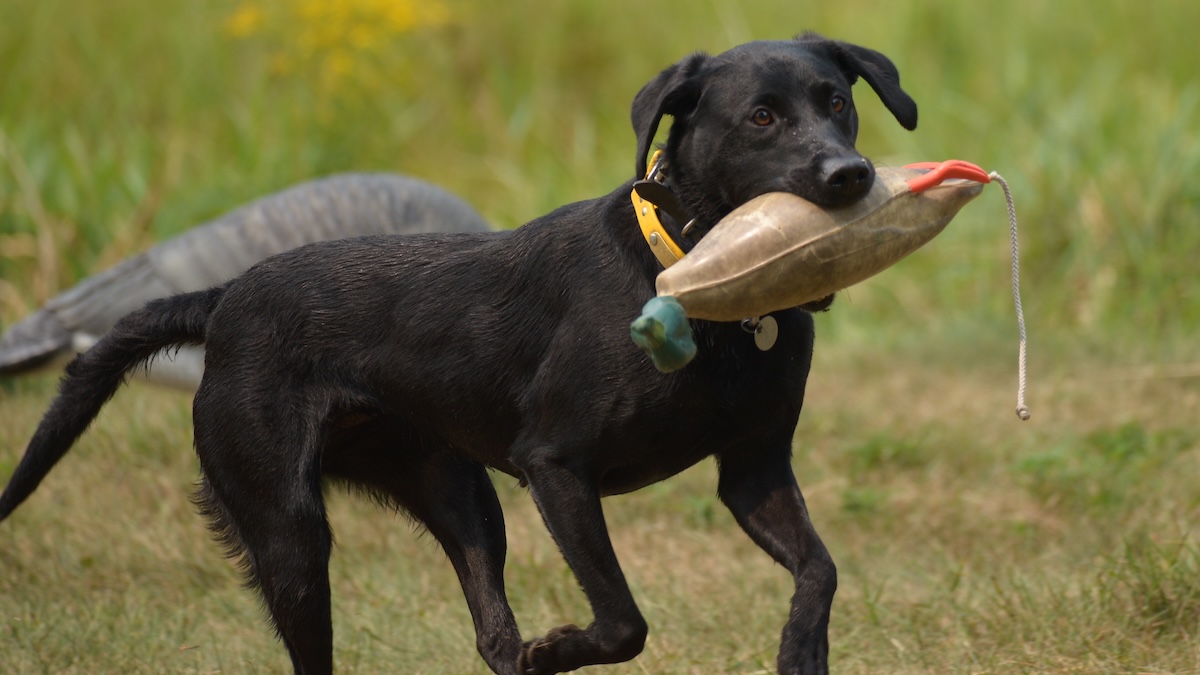I’m confident in saying that I have fairly well-trained bird dogs. They know the basics and can run multiple retrieves at the same time. My dogs are steady to the shot, and they listen really well. For me.
My daughters and my wife, their dogs aren’t quite as good. This is a real bummer, because they are the same dogs.
The thing about our modern bird dogs is that they are also house dogs, family dogs, and general pets all wrapped up in one package. This is great, but it can lead to some issues with their skills in the field. The most common involves a problem that an awful lot of bird dogs develop, and occasionally, can’t kick.
Deliver to Grass
Quite a few years ago, I stepped into a slough in Nebraska with my Lab, Luna. A hunting buddy and his Lab followed us into that chunk of public dirt. Within a minute or two of us marching forward, the first rooster got up.
When Luna came running up to me with that ringneck in her mouth, I reached down and she placed him in my hand. That’s when a couple of other birds got up, so I instinctively dropped him and shot at another rooster.
When I looked down, he was gone, and it was total chaos to get her to try to reset on a retrieve she’d already finished. If you have a bird dog that delivers to hand, whether through force-fetch or however you got it there, that’s great. If that dog starts to spit dummies or birds early, for some reason, all of that hard work can be lost–and so can birds, if they are wounded but capable of running or flying.
The easiest way to facilitate this is to take a well-trained dog and start using tennis balls or a Chuck-it with them. For whatever reason, they figure out quickly that they can Hawk Tuah a ball out on the ground, and a lot of folks will pick it up and throw it again. This is a mixed-message situation that will carry over to the moments you absolutely don’t want them to not retrieve to hand. Be careful of this, because one member of your family not paying attention can unravel a lot of work.
Breaker, Breaker
When I run retrieving drills with my dogs, they almost always have to wait before I send them. It’s conditioned in them, and it’s something that is just natural for me. I just don’t like dogs that break.
My daughters and my wife don’t really care that much about steadiness. This can lead to inconsistency, and the tough part is, you don’t know where the lax rules on their part will invade your world. It might not be during a training session, but instead might be during the fall migration when the first wood ducks of the year are on the menu, or later when the greenheads start heading south.
If steadiness is important to you, then everyone needs to be on the same page. There’s no way around it, and the same goes for recall.
Here, here, HERE!
For those of you who don’t have two 13-year-old daughters, I’ll let you in on a secret–they make noise almost nonstop. A lot of that noise is general words pointed in no specific direction, for no specific reason. When mixed with an old dog and a young dog, those words can blanket the world in nonsense.
Now, I’m not saying I don’t talk like a total lunatic to my dogs, I absolutely do. But I also try not to give them commands that won’t work in the moment. I also try really hard not to give them commands that I don’t mean, because that sends the wrong message, real fast. An easy way to see this one play out is with recall.
I want to get my dogs’ attention and call them to me in one simple sequence of events. I don’t want to have to raise my voice or lose my shit over them ignoring me because they’ve been conditioned to do just that. Whoever spends time with your dogs should understand the importance of this because when we minimize the importance of commands, performance atrophies over time.
If you’re paying attention, all of these issues and many more can be tied to inconsistency in training. The more everyone in your family, or whomever might get their hands on your dog, works with you to train, the better you’ll be. It’s good for the dogs, and it’s good for you.
That’s ideal-scenario stuff, and doesn’t play out in real life though. The best you can do is train with your loved ones as much as possible, and try to make it clear how important your rules are for not just you, but the dog.
If they even meet you halfway, that’s a huge win, and your bird dog will be much better off for it.
Read the full article here

